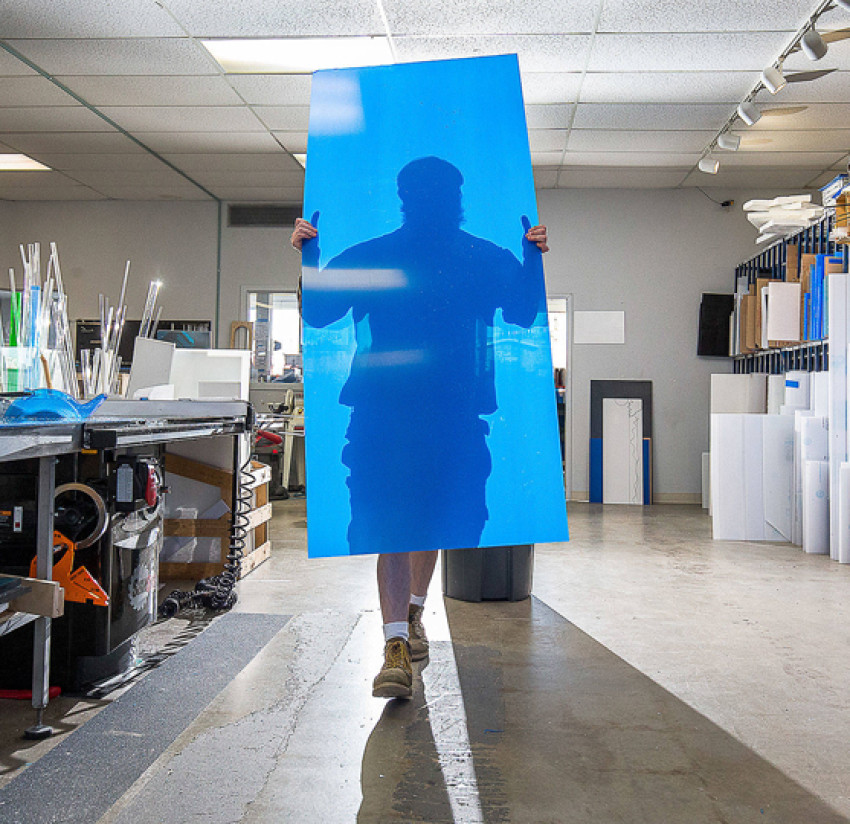
Public art has the ability to enhance and enrich our urban landscapes by adding beauty, energy, and cultural value to our public areas. Acrylic stands out as a flexible and visually attractive choice among the numerous materials utilized by artists and designers to construct these intriguing installations. In this article, we'll look at how acrylic is utilized to produce enthralling and inspiring public art and installations.
- Sculptures and Statues
Acrylic's flexibility makes it a popular choice among sculptors and artists looking to realize their creative dreams. Acrylic sculptures may range in size and complexity from small, delicate works to enormous outdoor installations. Because of its transparency, painters may experiment with light and shadow, providing depth and texture to their paintings. Acrylic is also weather resistant and robust, making it ideal for outdoor sculptures that will be exposed to sun, rain, and wind.
- Wall Murals & Art
Acrylic paints and panels are frequently utilized in public settings to produce large-scale murals and wall art. Acrylic paints are popular among artists working on time-sensitive projects because of their brilliant colors, good adherence to surfaces, and quick drying times.
- Light Installations
Because of its light-transmitting characteristics, acrylic is great for constructing eye-catching light displays that come to life after dark. Artists shape and diffuse light using acrylic sheets or tubes, resulting in mesmerizing sculptures and installations that brighten city streets, parks, and plazas. The look of these works frequently changes as natural light transitions to artificial illumination, producing a dynamic visual experience.
Installations of Interactive Art
Public art does not have to be permanent. Acrylic is utilized to make interactive works that engage and involve members of the community. Touch-sensitive acrylic panels, for example, may change colors, forms, or patterns in real time in response to the presence and movement of individuals. These interactive exhibits urge visitors to participate and provide them with remarkable experiences.
- Architectural Features
Acrylic is frequently used in architectural features to improve the appearance of public places. Acrylic panels can be utilized in buildings and public constructions as attractive screens, balustrades, and dividers. Because of its clarity and versatility, acrylic may be smoothly incorporated into architectural and design projects, providing a touch of modern elegance and refinement.
- Directional Signage
Acrylic is an excellent material for making navigational signs in public places such as parks, universities, and transit hubs. Because of its longevity and clarity, signage stays intelligible and visually appealing throughout time. Furthermore, acrylic may be readily modified with images, colors, and text to give the public with clear directions and information.
- Environmental Art
Acrylic from Acrylic Picture Frame Supplier is being used by artists and environmentalists to build installations that raise awareness about environmental concerns. Acrylic sculptures and installations depicting marine life, endangered animals, or climate-related issues are placed in public places to elicit thinking and action.
Conclusion
Because of its versatility, durability, and aesthetic appeal, acrylic has become a crucial tool for artists, designers, and architects looking to create public art and installations that enhance our urban settings. Acrylic by Acrylic Glass Suppliers scontinues to play an important role in creating our public spaces and offering a canvas for creative expression that can be appreciated by all, whether through sculptures, murals, light installations, interactive art, architectural elements, navigational signage, or environmental art.




